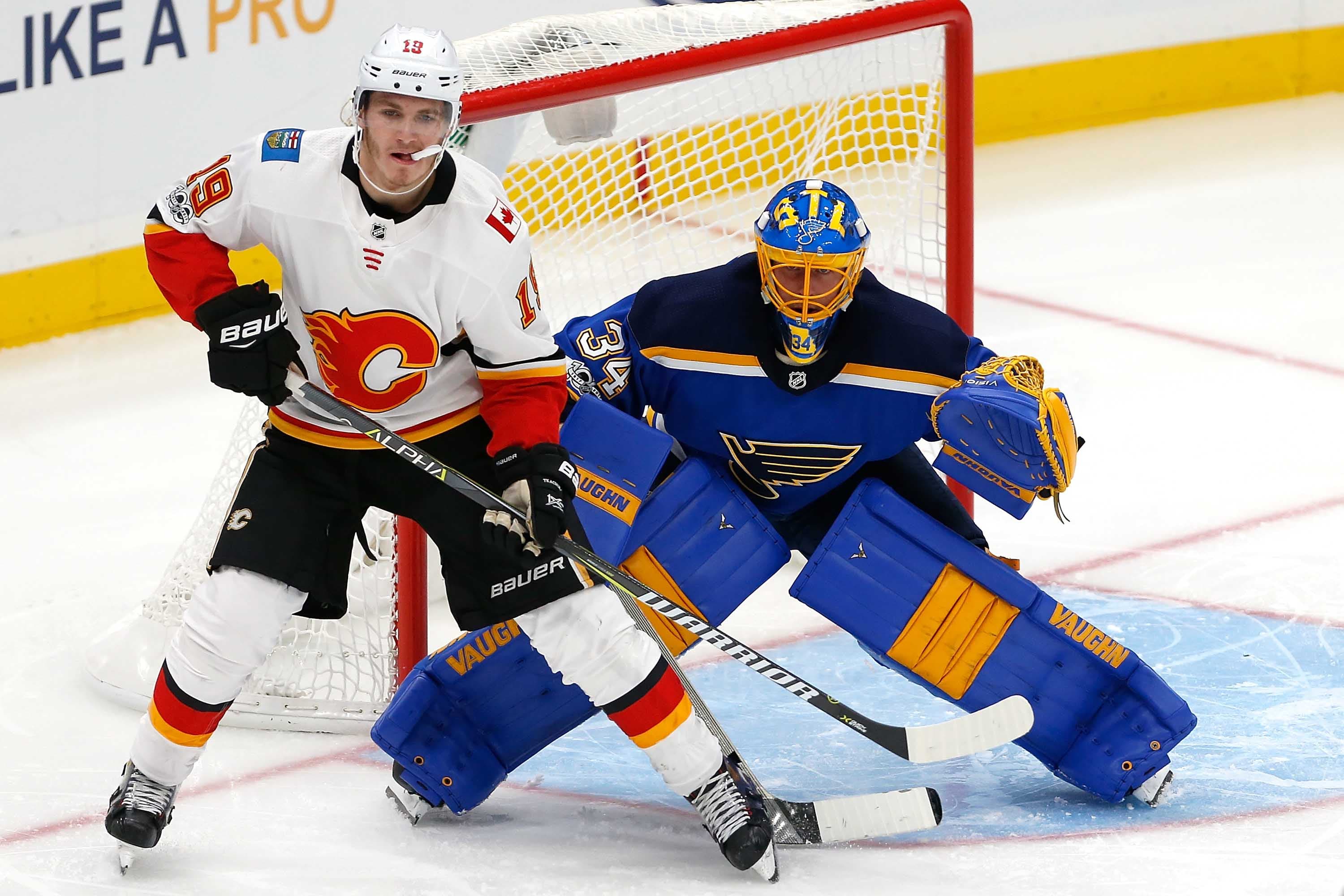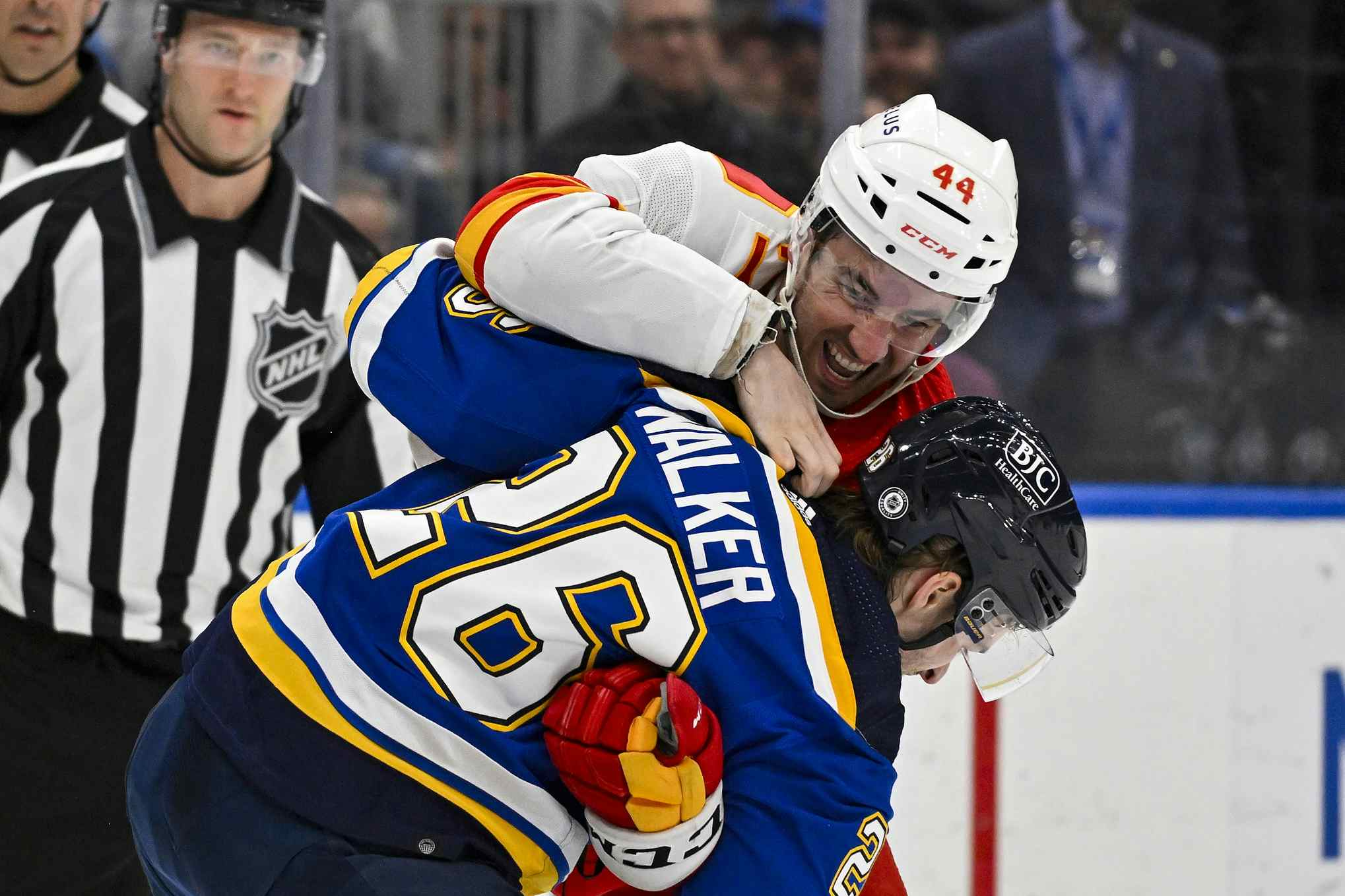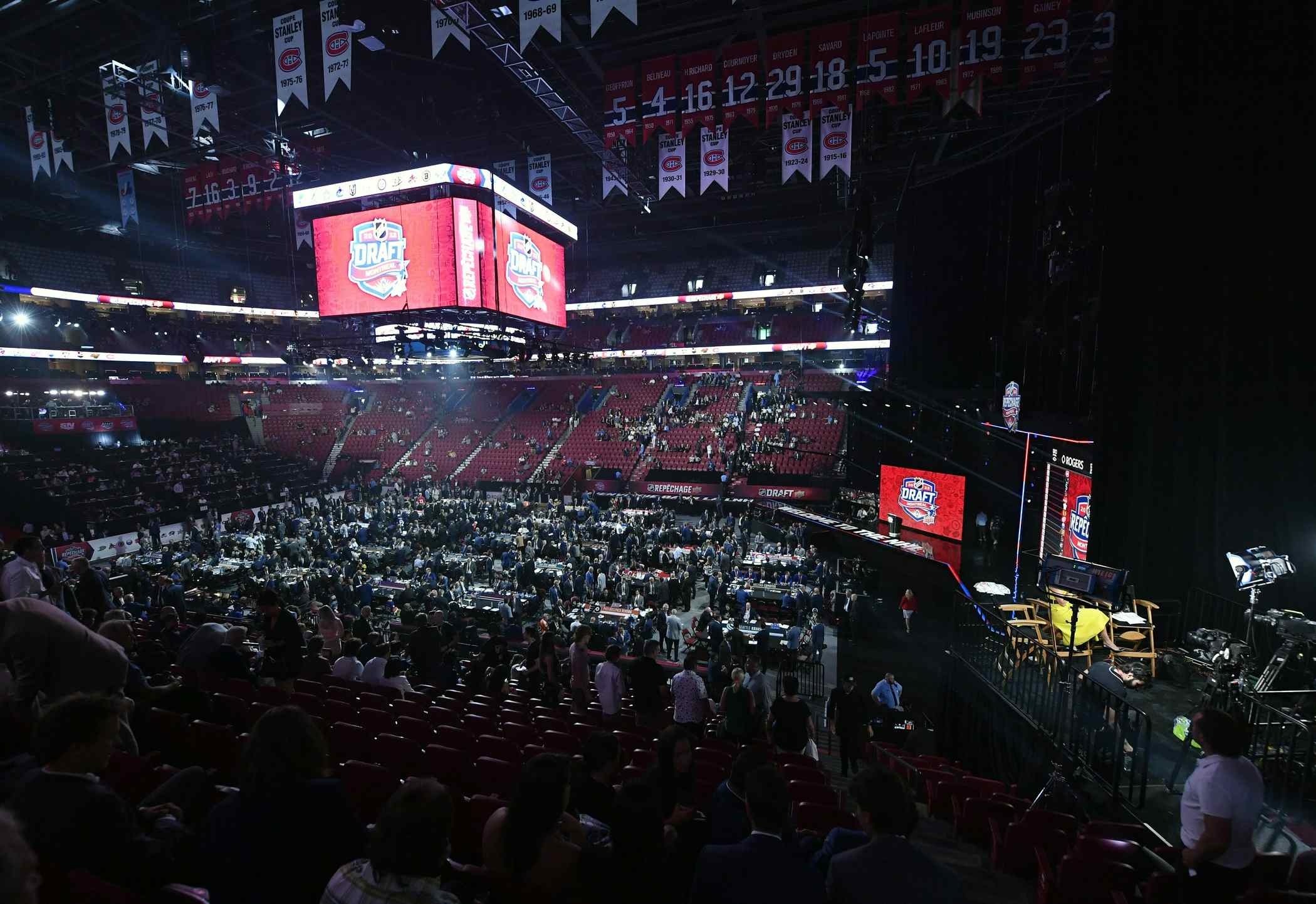Blues 5, Flames 2 post-game embers: Special teams failure

By Ari Yanover
6 years agoThe Flames jumped out to a fantastic start, dominating a well-rested Blues squadron.
However, as the game went on, penalties were taken, legs started to fall off, and it became evident the second of the back-to-back just wasn’t to be for the Flames – though the score hardly tells the whole story.
The peril of the back-to-back
The second of a back-to-back isn’t always a guaranteed loss.
That said, when you’re coming off of an elongated game the night before, and you have to fly into a new city that very night, and you’re facing off against another team that’s rather, well, good, the cards aren’t necessarily stacked in your favour.
Score aside, the Flames had about as good of a first period as they could have asked for. Taking score into account, though, even with all of that dominance, they only scored once, while a Travis Hamonic turnover allowed the game to be tied, undoing all of the good they had done. Had the team been able to build up a more substantial lead while they were still energetic, they may have been able to hold onto this one.
That wasn’t the case, though, as a great 5v5 start succumbed to nothingness – and the Blues had a 60.71% 5v5 CF to rule the final frame, during most of which the Flames needed just one goal to tie it up.
Special teams loss
Nashville was almost a special teams loss. The Flames surrendered two powerplay goals on three attempts, and had it not been for their third period rally, they would have gone down in a game they would have deserved to win.
In St. Louis, they surrendered two powerplay goals on three attempts. They failed to score on any of their own three powerplay opportunities. And that was the difference. Though this time around, it was the second powerplay unit – the 3M line, plus the top defence pairing – that got more ice time, and still couldn’t get it done.
Their penalty kill is now 79.5%, tied for 16th in the league. Their powerplay is 15.8%, 20th. Things aren’t as dire in either area as they were a year ago, but special teams are still wreaking havoc on the Flames.
They’re playing well at even strength – though their 2.40 goals per game is fourth worst in the NHL – and losing because of a small handful of mistakes. If they were scoring more, maybe it’s not an issue. If they cut the mistakes down, maybe it’s not an issue. They aren’t doing either, and it is an issue.
3M
There’s still an individual positive to take from this, and it’s the 3M line, born in St. Louis on Oct. 25, 2016. It had a pretty good birthday celebration, all things considered: two strong goals from Mikael Backlund, two strong assists from Matthew Tkachuk, plus one from Michael Frolik (who also led the way with four shots. He’ll score again one day, I’m sure of it).
While the trio were the only ones to get the Flames on the board, they were crushed, possession-wise, tasked with handling the Blues’ top players – who, again, are really rather quite good. (It should also be noted that while the Flames’ strongest corsi players, plus Micheal Ferland, were under 50%, their sacrifice allowed everyone else to stay above water – which could have made the difference, had it not been for special teams.)
But really: how often do lines stick together for an entire calendar year? Frolik still has another two years on his contract. Tkachuk is probably going to get a rather lengthy second contract when the time comes. And Backlund, you have to think, re-signs, because he’s just so special a talent – look no further than his effort on his first goal, from one end of the ice to the other.
Jankowski watch, part two
Mark Jankowski’s ice time slowly crept up, from 11:38 to 12:16, while he continued to receive no special teams time. The only players he played more than were his linemates, Sam Bennett (six additional seconds), and Curtis Lazar (who was replaced by Kris Versteeg after disappearing for nearly a full 20 minutes of game time, possibly due to injury after taking a hit from Jaden Schwartz).
Jankowski’s 60% CF was pretty good – fifth on the Flames – even if it was, once again, the product of sheltered circumstances (75% OZS, also fifth most). At the minimum, it’s certainly appreciated: I don’t think anyone is expecting Jankowski to play hard minutes on the road, and he’s ultimately performing rather well with what he’s getting. It’s hard to fault him, although it may be a bit concerning that he has yet to record an actual shot on net.
For the record – small sample size, and all that – but Jankowski and Bennett performed better with Versteeg on their line, as opposed to Lazar.
We’ll look a bit further in depth on Jankowski’s near future in a post later today.
Lack’s first start
The last time Eddie Lack started a regular season game, it was April 9. That was about six and a half months ago. There was, indeed, some rust, but for the most part he played a good game and made some strong saves.
Just not enough, but it’s not like he was the one turning the puck over or taking penalties.
Although three of the four goals he gave up did seem to find the middle-to-top corner, far blocker side, which might be something to watch for in the future.
I’m not sure if Mike Smith wins this game – maybe he gets them a point, at the least – but Smith can’t dress for every game. The Flames don’t play another set of back-to-backs for another month, though, so I’m not entirely sure what the plan is for Lack, because I can’t see leaving him sitting for that long again doing him much good. And as good a start to the season as Smith has had, the Flames will need a functional backup.
Recent articles from Ari Yanover





